





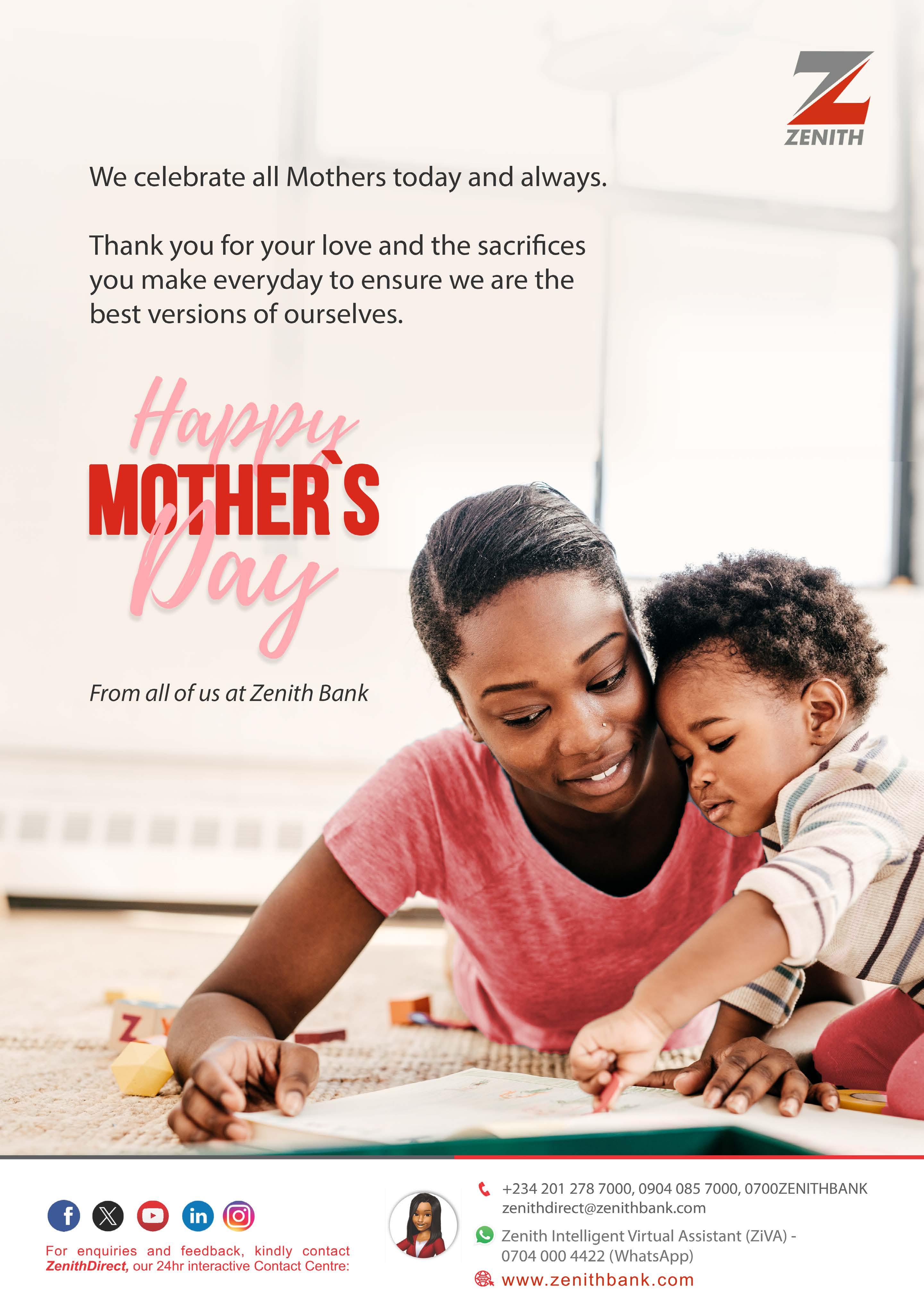

Fashion entrepreneur Banke Kuku is the CEO and Creative Director of Banke Kuku Textiles, a company that makes custom-printed textiles for the interior design and fashion industries. Her design aesthetics are primarily influenced by her time in Nigeria and the UK, so she is a fusion of both cultures. Interestingly, she didn’t always start with her brand Banke Kuku; it was her side hustle before it became her main business, as she worked for a fashion house in London before eventually starting the Banke Kuku brand full-time. She started designing textiles for fashion houses and then went on to have her own soft furnishing line, which was successful and sold globally. The loungewear which she became known for was to compliment the soft furnishing. Although she had her soft furnishing line, her true joy was in fashion design. The Banke Kuku brand is a luxury brand, and Banke describes luxury as moving at a slow pace so you can take in the exceptional experience. She also says slow fashion is about creating pieces using good quality materials and crafting them with immense attention to detail. Read Banke’s interview on pages 8 to 10 for more information about the brand.
Finding the ideal pair of jeans can prove challenging, but getting the perfect fit is relatively easy. We compiled a comprehensive list to help you choose the perfect jeans for your body type.
Do you have a small space? You can still make your décor out of this world, and we show you how on page 14. Find out ways to decorate your small space to make it bigger. This is a must-read for those with mini flats and studio apartments.
Don’t forget to click on the instructions below the QR codes on page 16 to download our bubbly playlist. I promise you’ll love it.
Until next week, enjoy your read.
@onahluciaa
+ 2349088352246

PUBLISHER/EDITOR-IN-CHIEF
Executive Editor: Onah Nwachukwu @onahluciaa
Lifestyle Editor at Large: Eki Ogunbor
Online Editor: Ntianu Obiora
Writer: Johnson Chukwueke
Graphic Design: Olaniyan John ‘Blake’
Digital Media: Oladimeji Balogun
Guest Art Director: Sunny Hughes ‘SunZA’
www.thewilldowntown.com

The
I Was And The
Soulmates Don’t Always Wear Rings
DIY Masks You Can Whip Up At Home For Healthier Hair
Space Décor Tips for Decorating Compact Spaces
Pisces
Gifts and Talents of the Pisceans
Dune: Part Two




Odun Ogunbiyi @oddbodandthecity
- Contributing Editor
Odunayo Ogunbiyi is an ex pharmacist with a passion for food and pampering. Writing about her exploits wherever in the world she may find herself is just her way of staying sane in this zany world.
Boluwatife Adesina @bolugramm
- Contributing Writer
Boluwatife Adesina is a media writer and the helmer of the Downtown Review page. He’s probably in a cinema near you.
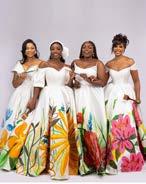











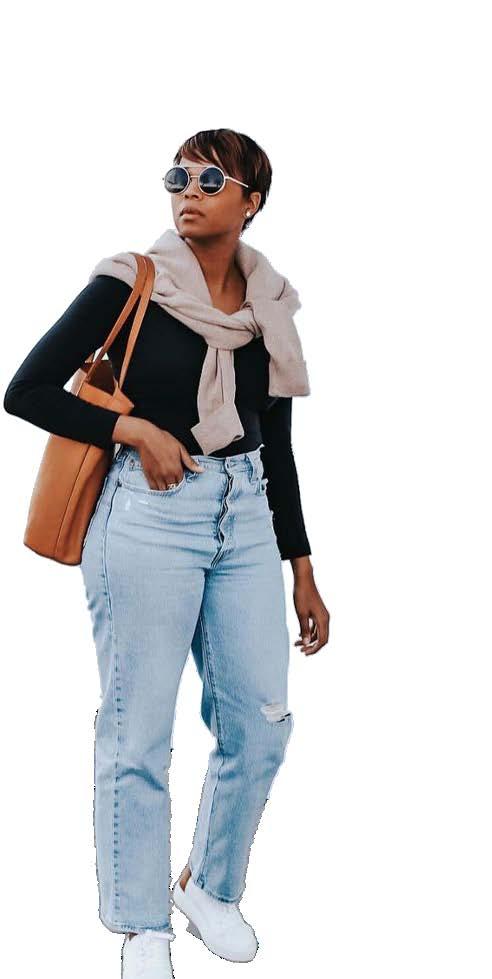
Although finding the ideal pair of jeans can seem impossible, it’s quite simple to get that ideal fit. Jeans are an essential piece of clothing that, when worn well, draw attention to your best features and give you more selfassurance. The secret is to know your body type and choose jeans that fit it. These comprehensive tips will help you choose the ideal jeans that fit your body type.
The first step to getting the ideal jeans is figuring out your body shape. Finding styles that accentuate your natural silhouette can be easier by understanding your proportions, regardless of your athletic, pear, apple, or hourglass shape. There is a perfect jeans style for any body type, so embrace and value your appearance.

A major factor in how well your jeans fit your body is its rise. Mid-rise jeans accentuate the waist without drawing attention to the curves of an hourglass figure. A mid-rise that comfortably rests at the natural waist may work better for apple forms, but a higher rise helps balance your proportions if you’re pear-shaped.
Although it is sometimes disregarded, the inseam length of your jeans has a big influence on the overall look of your jeans. Your legs will appear longer and more attractive if your inseam is adjusted correctly. Taller people can choose a longer inseam to accentuate their height, while cropped or ankle-length inseams are appropriate for smaller frames.

Your legs’ apparent size and form may vary depending on how your pants are washed. Dark wash clothes are an excellent choice for various body shapes because they tend to be more slimming and adaptable. Use lighter washes carefully because they have the potential to highlight specific areas. Try various washes to see which suits your unique style and body type best.

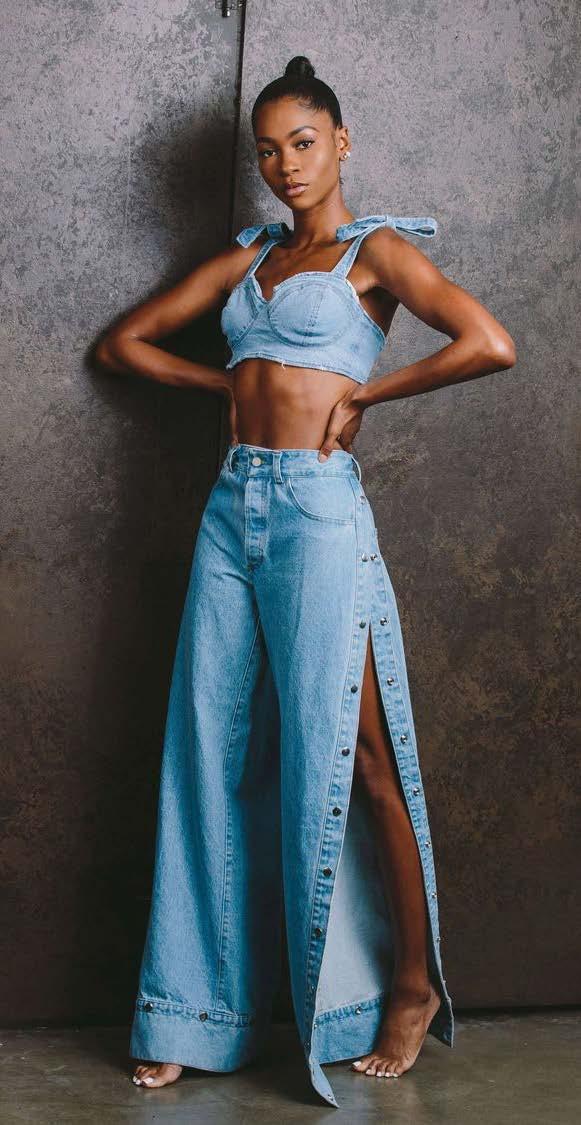
The fabric composition of your jeans influences fit and comfort. Flexibility and a snug fit without being too tight can be achieved with a well-balanced stretch. Consider materials that combine cotton and elastane for the ideal balance of comfort and shape preservation. Move around to test the stretch; your jeans should be able to accommodate your movements without losing their shape.

Tailoring your jeans to fit you specifically is nothing to be terrified of. Sometimes, a minor alteration to the waistline or hem can have a big impact. With a pair of jeans that feel custom-made for you, tailoring guarantees that your jeans highlight your body shape.
It all comes down to knowing your body type and making wise decisions when it comes to finding the ideal jeans. If you adhere to these thorough guidelines, you should have no trouble finding jeans that fit you properly and enhance your body type, giving you more self-assurance and flair.

Is it okay to engage in sexual activity while pregnant? If so, is it harmful to have “too much” sex when expecting a child? Despite common concerns, obstetricians assure expectant mothers that having sex is safe and will not harm the unborn child. If your pregnancy is easy to handle and you’re feeling brave enough, you can even dance in the sheets until your water breaks. For some couples who have tried to conceive through sex, the burden of having a baby is off; thus, having sex during pregnancy can be more pleasurable. Ready to get busy? In this article, we will explore everything you need to know about sex during pregnancy, including the benefits of sex during pregnancy.
Throughout their pregnancies, many women experience difficulties with their body image. Your body is changing, and you could feel less attractive as your waistline gets wider. One approach to rediscovering body confidence is through sexual activity. It can assist you in realising that, despite physical changes to your body, you can still enjoy pleasure.


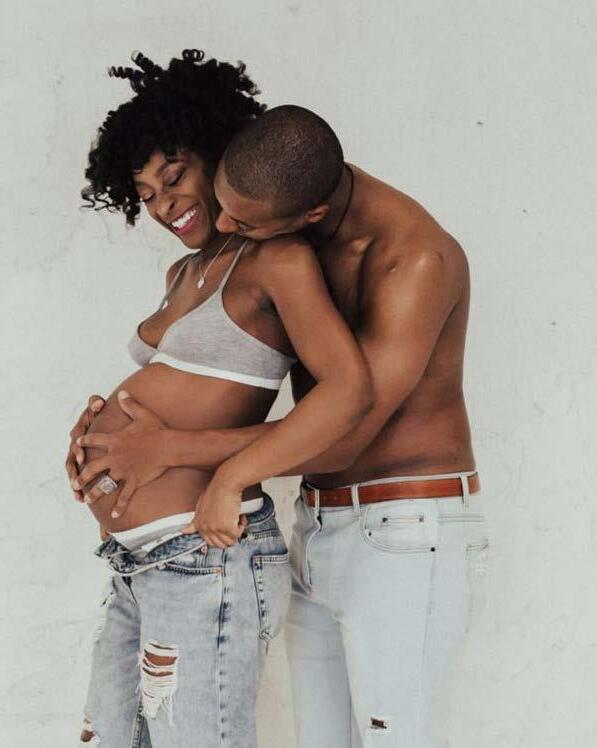
Having sex while pregnant facilitates vaginal lubrication. Additionally, vaginal sex has several benefits. It gets the cervix and pelvic muscles ready for giving birth. Pregnant women are typically advised to have sex, especially if they have already reached the ninth month of their pregnancy, as it helps elevate oxytocin levels.
The “love” hormone, oxytocin, is produced in greater amounts when a pregnant woman has sex. This hormone helps with stress reduction and better sleep and momentarily conceals aches and pains. To fight fatigue and other bothersome pregnancy symptoms, a pregnant woman can sleep better thanks to sex, bonding, and an increase in endorphins.
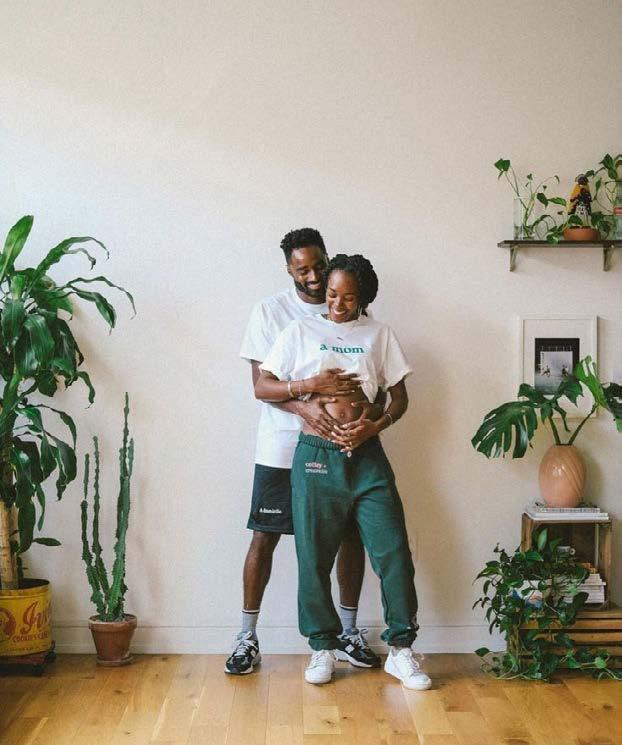
CONCLUSION
Your ability to give birth and recover thereafter will be greatly enhanced by having a firm pelvic floor. Having well-developed pelvic muscles can help you become more sexually satisfied, ease your baby out, and minimise incontinence.
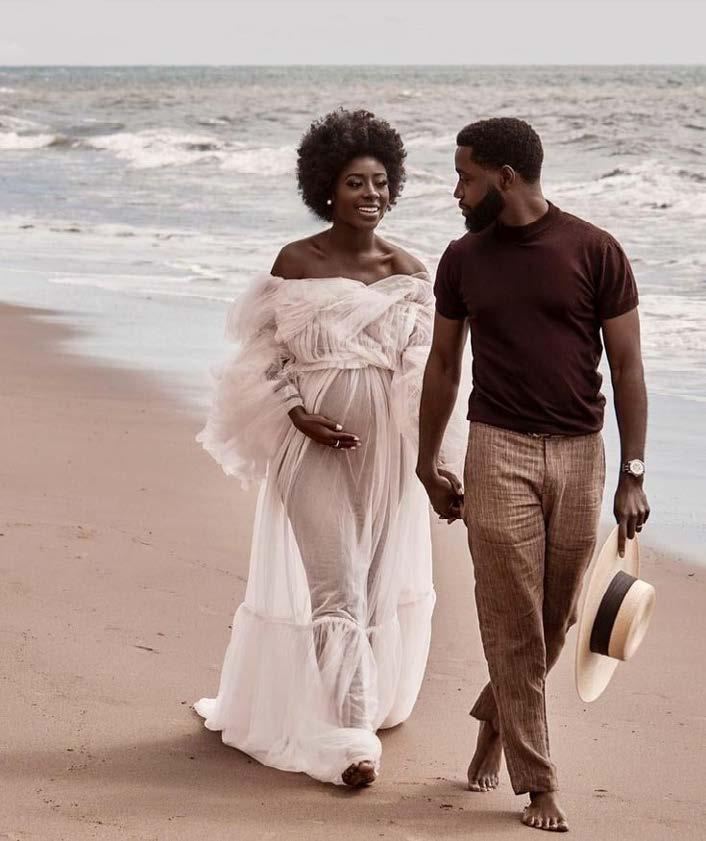

Having sex during pregnancy has many benefits, one of which is improved blood circulation. To fulfil the needs of both herself and the unborn child, the mother’s blood supply increases throughout the pregnancy. Insufficient blood flow, however, could make the pregnancy difficult. Through the production of hormones that promote growth and development, sex can assist the fetus get more oxygen and nutrients.
In a low-risk pregnancy, having sex is safe at any time. Be sure that your pregnancy is not classified as high-risk by speaking with your doctor before having any sexual activity. Throughout your pregnancy, it’s typical for your sex drive to fluctuate, growing and diminishing. In the second trimester, most women discover that their interest in sex increases. Sex during the first trimester may be challenging due to symptoms like fatigue and nausea. You may have less desire in the third trimester if you worry about the realities of having a baby. Only engage in sexual activity when you’re feeling it. You should always trust your body. Nevertheless, bear in mind that having sex when pregnant has a lot of advantages.

The terms diversity and inclusion have recently gained popularity in the fashion business. Many fashion brands are adopting the notion that fashion should be accessible to all people, regardless of their background, size, or shape. By dismantling boundaries and questioning conventional notions of beauty, these firms are transforming Nigeria’s fashion industry and making it more diverse and inclusive. Among these brands is Banke Kuku, a Nigerian fashion label established in 2011 by Banke Kuku. Banke Kuku is a Nigerian-born fashion entrepreneur. She is the CEO and Creative Director of Banke Kuku Textiles, a company that makes custom-printed and woven textiles for the interior design and fashion industries. Acclaimed for her distinct interpretation of opulent loungewear, Banke draws inspiration from the cultures of the time she spent in Lagos and London. These cultural influences have a significant impact on her vivid patterns, which produce eye-catching statement prints. Her business is known for being among Nigeria’s most socially conscious due to its dedication to advancing diversity and inclusivity.
In this interview with THEWILL DOWNTOWN’s Dorcas Akintoye, Banke Kuku talks about the complexities of her journey as a fashion designer, the future aspirations for her brand, and the inspiration behind her brand’s name. She also discusses International Women’s Day and its theme, “Inspire Inclusion and how her brand has contributed to fostering inclusivity within the fashion industry.
Banke, your journey in the fashion industry is truly remarkable. Can you share the story of how your upbringing in both Lagos and the UK influenced your unique design perspective?
Nigeria and the UK both had a major influence on my design aesthetic. My love for creativity was identified while growing up in Lagos, and it was nurtured in the UK. I would say I’m a fusion of both cultures because I’m inspired by my journey and everything around me.
Banke Kuku has made waves in the world of textiles and fashion.
What inspired you to create your own label, and how did you come up with the name?
Banke Kuku, the brand, started very organically. It was my side hustle, which became my main hustle.
I was working full-time at a fashion house in London and didn’t have the time to balance both.
Your designs have been praised for their modern and unique take on luxury loungewear. What does luxury mean to you, and how does it influence your work?
To me, luxury is moving at a slow pace so you can take in the exceptional experience. Slow fashion is about creating pieces using good quality materials and crafting them with immense attention to detail. This is what we do at Banke Kuku.
In a dynamic and ever-changing fashion industry, what strategies do you employ to stay innovative and relevant with your brand?
“Slow fashion is about creating pieces using good quality materials and crafting them with immense attention to detail. This is what we do at Banke Kuku.”
Banke Kuku gave me more fulfilment. It wasn’t an easy decision to take it on full-time because of the uncertainty of where I was going to take the business. I took the leap of faith.
I started off designing textiles for fashion houses. Then, I went on to have my own soft furnishing line, which was successful and sold globally.
The loungewear was to compliment the soft furnishing. I found my true joy in fashion design. It took me years to identify my true passion, but I wouldn’t change anything, and I absolutely love what I do.
I chose the name Banke Kuku because my brand is a reflection of me.
Your career has spanned both fashion and interior design. How do you find inspiration for your designs in both of these creative fields?
My aesthetic in both industries is always consistent because it comes from who I am. I’m inspired by the storytelling of what is around me. My latest collection is inspired by nature. I tell many nature stories throughout my work. In this collection, I felt like my brand needed to own who we are, and it was really the beginning of something really special. In the beginning, there was Eden. I was trying to perfect what I do and Eden was the perfect garden. I made Eden true to my identity by telling the garden story through a Nigerian lens. All the prints were inspired by plants and animals from Nigeria.
Fashion designers often face challenges. Can you tell us about a significant challenge you’ve encountered in your career and how you overcame it?
The fashion industry in Nigeria has its challenges. Designers have to wear many hats, from design to logistics, which is overwhelming.
Currently, there are lots of conversations about strengthening the industry, which will certainly make things easier for designers. With the right support, I believe the industry can prevail.
As a designer who’s been featured in prestigious publications like Vogue, what advice do you have for emerging designers looking to make their mark in the industry?
I’m a very inquisitive person, not just about fashion but about life. I encourage my team to be the same. It’s so important to keep learning. I love seeing and soaking up information. It inspires me. This is what keeps me innovative.
If you had to choose one word to describe the essence of Banke Kuku, what would it be, and why?
Inclusive. We are about everyone. All body types, races, and religions.
In a world increasingly focused on sustainability, how does Banke Kuku address eco-friendly practices and ethical considerations in your designs and production? We have a minimum waste policy. Offcuts are used for scrunchies, eye masks, etc. Digital printing uses low heat, which is better for the ozone layer.
are very limited job opportunities for women in Nigeria, where they feel valued. It’s important for women to have their own. This builds on her confidence to fight for her right to be respected. I have spoken at conferences, and I support charities that don’t deal with the physical damage of genderbased violence but start right at the beginning, which is education. Educating children and adults that no means no and we must respect each other. Gender-based violence is a pervasive issue globally. What motivated you to actively contribute to the cause, and how do you see the fashion industry playing a role in promoting awareness and change?
I contribute to this cause because I want to see more women win. Gender-based violence is a big issue that holds women back. Did you know one in four people in Nigeria has faced gender-based violence, and the majority of them are women?
The fashion industry can do several things to support this cause. Firstly, the industry can continue to create job opportunities for women. Secondly, we can use fashion-based platforms to educate people about gender-based violence to raise awareness. Lastly, the industry can make donations to rehabilitate displaced women and help with the physical and mental scars.
If you could collaborate with any fashion designer, living or from history, who would it be and why?
Alexander McQueen. I love how he used British culture to influence his designs. I think his strong British influence and my Nigerian could have something amazing.
You’ve had the opportunity to work with renowned fashion houses and even contributed to fabric design for the Royal collection at Buckingham Palace. Can you tell us about one of your most memorable experiences during this time?
“Look, I like my time alone. I’m a loner. I think I’m one of the few people who enjoy this time alone. I could be here for two days and not step out there.”
What are your future aspirations for Banke Kuku, and where do you see your brand in the next few years? We plan to support our local community as best as we can through charity and education. We currently support two charities that are fighting against gender-based violence. WARIF and Mirabel Foundation. We look forward to working with many more and pushing our own causes one day.
We will expand our global footprint and continue to tell our Nigerian stories through fashion and textiles.
“I get excited because every woman or man who wears Banke Kuku wears it in their unique way and it is beautiful to see. I see a piece being worn it’s like I’m seeing something new.”
Be consistent. Good work takes a long time; be patient.
Your work in the fashion industry is complemented by your dedication to social causes. How does your advocacy against gender-based violence align with the values of Banke Kuku, and what initiatives have you undertaken to raise awareness?
All over the world today, women face gender inequality, abuse, violence, and so much more. This is why 80% of my workforce in my fashion business is female. I am intentional about this. There
My most memorable experience during this time was winning the ‘Women in Making’ competition, which was run by a Lingerie brand called Triumph in 2014. It was an incredible time. I gained fantastic press, which drew a lot of attention to my business. I was privileged to have the most incredible mentors. Sophia Webster, Roskanda and Georgina Coulter (head fashion buyer of Fenwick at the time). Having these mentors gave me a better understanding of the business of fashion which really helped the business.
Becoming the first Nigerian designer stocked at Galeries Lafayette Doha is a significant achievement. How did this partnership come about, and what impact do you think it has on the global fashion industry?
Galeries Lafayette approached me, and it has been an honour to be the first Nigerian to stock with them. We are now in our third season of stocking with the store. It shows the world that Nigerian designers can be consistent. It is a great moment for the Nigerian fashion industry. I’m telling Nigerian stories to the world, and It’s fantastic to be positioned next to world-renowned designers.
Your textiles are known for their bold patterns and captivating impact. How do you go about choosing or creating these statement prints?
I design all prints for Banke Kuku. I always choose something I’m passionate about, which helps me express myself as an artist. I start with a strong subject matter, and the creative process begins. It can take months to create a print.
In light of the International Women’s Day theme “Inspire Inclusion,” how does Banke Kuku contribute to fostering inclusivity within the fashion industry, and what steps do you take to ensure diverse voices are heard and represented?
Nothing shows inclusion more than my kukutribe. The kukutribe is my community both online and

offline. My friends tease me about how I still get so excited when I see people wearing my pieces. I get excited because every woman or man who wears Banke Kuku wears it in their unique way and it is beautiful to see. So, every time I see a piece being worn it’s like I’m seeing something new.
I’m starting a new series which is called Conversations with Banke where I speak to my kukutribe from different industries, cultures, and women and men of all ages. I’m very excited about this.
“Inspire Inclusion” implies breaking barriers. As a successful entrepreneur and designer, what advice do you have for women aspiring to enter the fashion world, particularly those aiming to challenge and redefine traditional norms?
Focus on you. Don’t try to be someone else or, imitate what another person is doing or get sidetracked by what others are achieving. Finding yourself and being confident in yourself is a journey. It’s not necessarily a fashion journey; it’s a life journey that you will have to apply to your creative career. I’m constantly on a self-discovery journey. It’s constant because life is ever-changing. When it changes you have to adapt yourself to it.


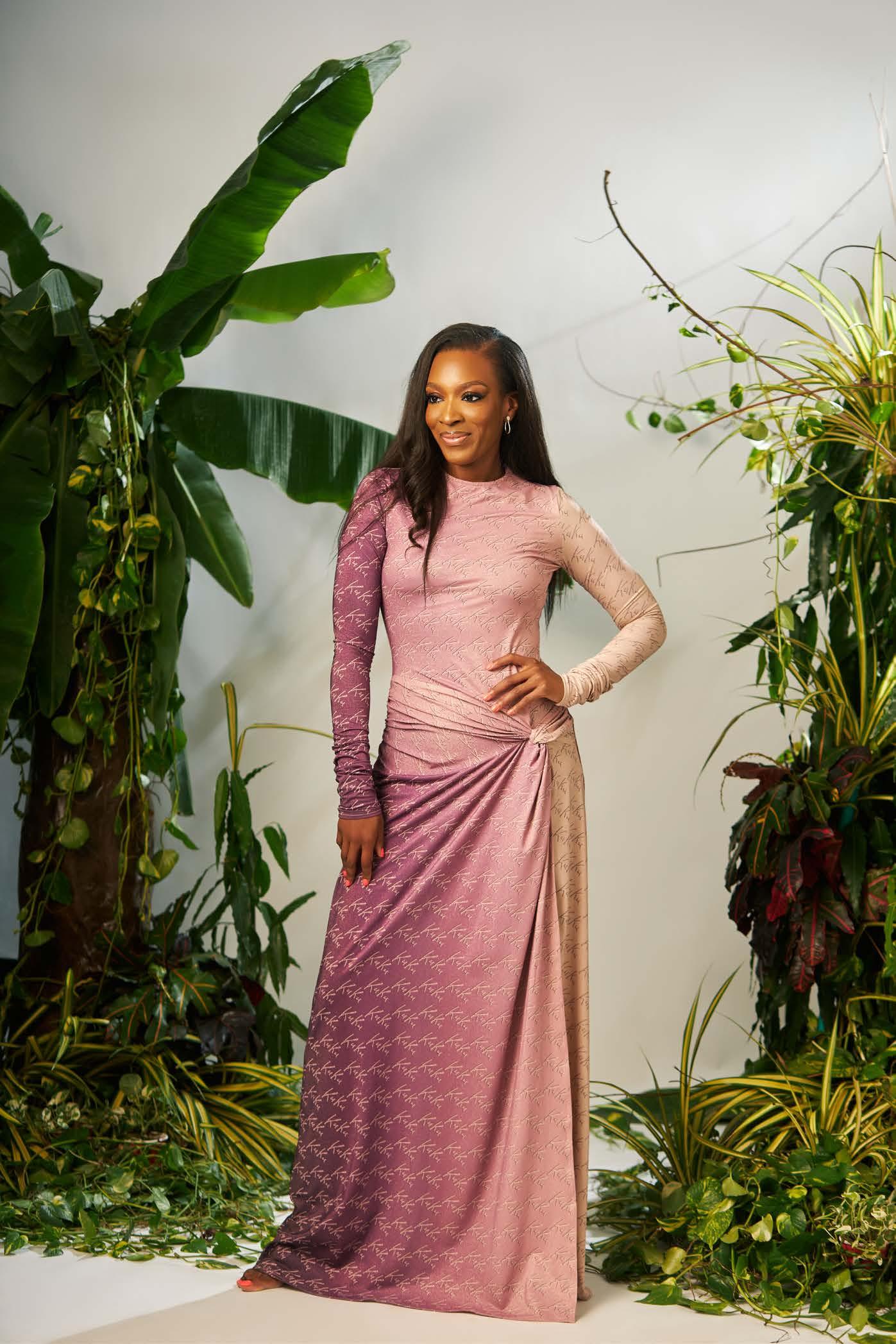

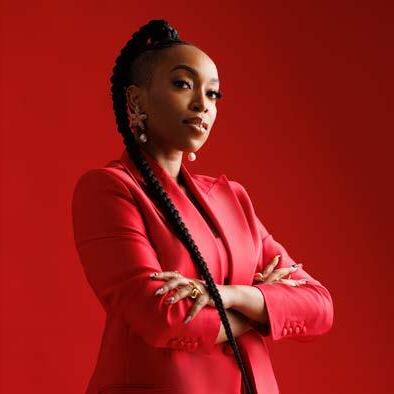

The other day while going through some things in my old room, my mum found my SS3 year book and sent it to me. I had a good laugh going through it. My name was misspelt, and the nostalgia was through the roof. I took photos of some of the pages and sent them to secondary school friends I still talk to, and we had a good laugh about things we experienced together back then. I also posted some on my Instagram stories and got my online friends laughing and sharing reactions as well. It was a fun trip down memory lane.
After all the jokes and giggles, the main thing that stood out to me was my graduate sign out message, which was:
“Focus on the ‘Big Picture,’ don’t get distracted by the little things, concentrate on what you came here for. Have fun and study hard.”
When I shared it with a friend of mine, she mentioned how the quote is still so
relevant today and I agree. Beyond the need to advise those coming after me in school back then, the quote is also needed for our journey through life in general. Concentrate on what you came to life for; which is your purpose, and don’t get distracted by little things that don’t matter in the grand scheme of things.
What are those little things that tend to get you distracted?
For me, it’s mainly imposter syndrome, feeling unqualified and incompetent despite being able to accomplish most of the things I’ve set my mind to, to the glory of God, of course. However, sometimes I can’t help but feel like I’m not doing enough, and that need for more, perfectionism stops me from celebrating my current achievements, a bad habit I’ve changed over the years. You must celebrate yourself, you have to celebrate your life; life is too short not to.

I didn’t know what my “big picture” was while writing that quote, but I knew the person I needed to be to make it happen when I eventually found out what it was. Going through life, I haven’t always known who I’d grow up to be in terms of a career or profession because growing up, I understood that there are so many ways to get to one destination, and everyone’s journey is different. So many people go to school to become doctors, lawyers, engineers, but somewhere along the line there tends to be a realisation of their passion and true purpose in life and that’s where the shift happens. Then you see those lawyers or doctors becoming actors, musicians, or creators of the next invention to solve a common problem the human race has had
for years or bring it closer to home, a difficult situation in their community or neighbourhood. My parents were a clear example of this, and I’m truly grateful to them and God for that.
I haven’t always known what I’d grow up to be, but I’ve always known the kind of woman I wanted to become. Someone who has a close relationship with God, who is kind to others and treats others with love, empathy and respect. A well-behaved child who makes her parents proud, a problem solver and someone who sparks joy for others.

Along the line, after watching my mum, aunties, and older cousins, noticing their fashion choices, and falling in love with clothes, I knew I had to do something that involved clothes and dressing up. The “big picture” I had discovered for myself was in fashion and style, so there was a shift. A realisation of my passion in life, which later morphed into a major pivot from studying accounting and finance to pursuing a career in fashion. So, now I knew the kind of woman I wanted to become, and I knew what she would do for a living, so my journey to the fashion industry began. But that’s a story for another day.
What I’ve now realised, looking back at how that 15-year-old girl felt about who she was becoming, is that I’ve made my younger self proud, and the same goes for my present self, who is also proud that a younger me was able to write something that would still be so relevant today, even to me as an adult. I’m learning to focus on my goals, live a life that I love with the people that I love and try not to sweat the small stuff. Yes, those times will come when I’m plagued with anxiety, imposter syndrome, the fear of failure, comparison, self-doubt or negative people and environmental factors, but you know what? I’ve kept it going in spite of all that, and future me is proud that I’ve fought the good fight to keep going and growing into the woman I’ve always wanted to be.


Growing up, like many girls, I was fed a steady diet of pop culture that glamorised romantic love. Shows like Sex And The City promised a swirling vortex of relationships, passion, and enviable outfits. Yet, as I grew older, I realised that the greatest loves of my life weren’t the men I’d dated, but the women who have been my fierce and unwavering allies.
Falling into a deep friendship isn’t always about a grand “meet-cute.” It’s a slow burn, a feeling of recognition that blossoms into something profound. With my best friend Agi, it was the giddy realisation that we shared a love of dark humour, an innate understanding of each other’s silences. We invented a world of our own that was more vibrant and fun because we were in it together. Our friendship redefined what a meaningful connection could be. It proved that friendships could be as deep and complex as any other love, full of beauty and challenge in equal measure. We weren’t afraid to be our real, sometimes messy selves; we’ve held mirrors up to each other during hard times and celebrated each other fiercely in the good.
Through it all, we’ve navigated the shifts that come with growth,

both individually and within our bond. This journey of evolving together, witnessing one another become stronger and wiser, has only deepened our connection. She’s not just a friend; she’s a soulmate, a constant reminder that the most profound love stories can unfold beyond the realm of romance.
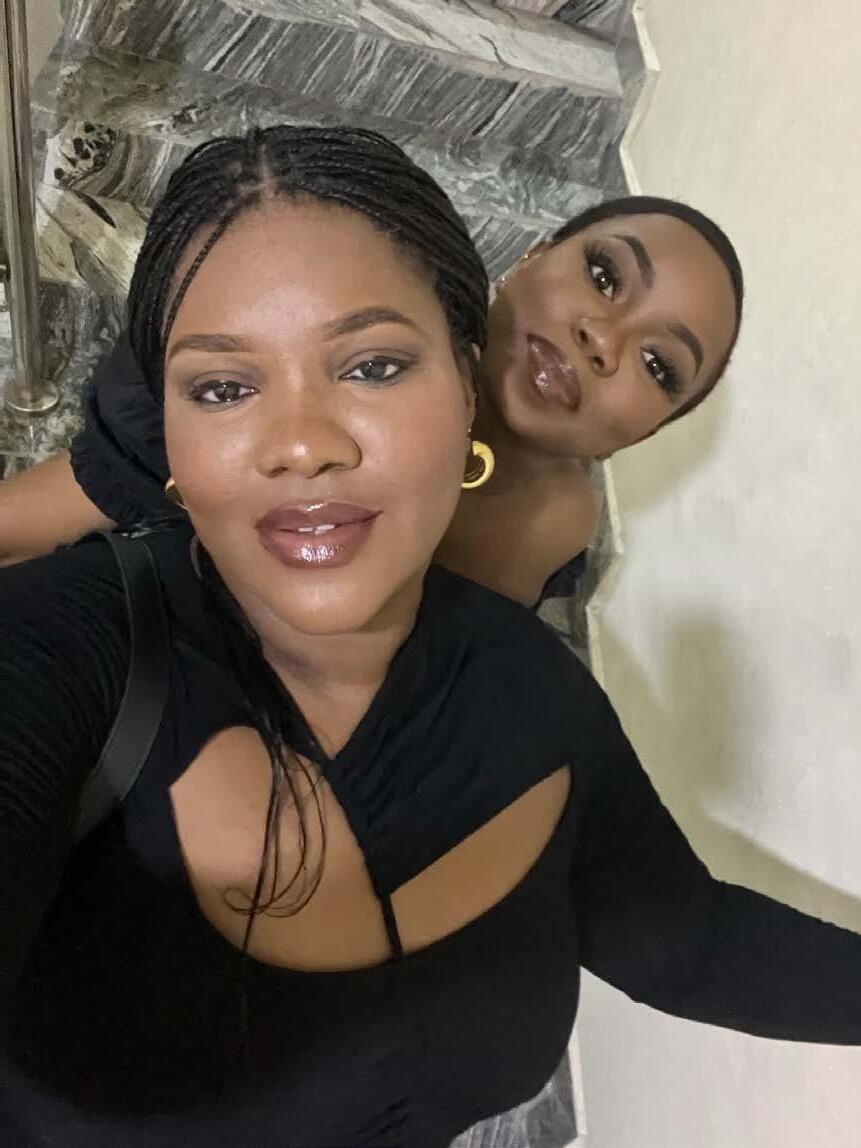
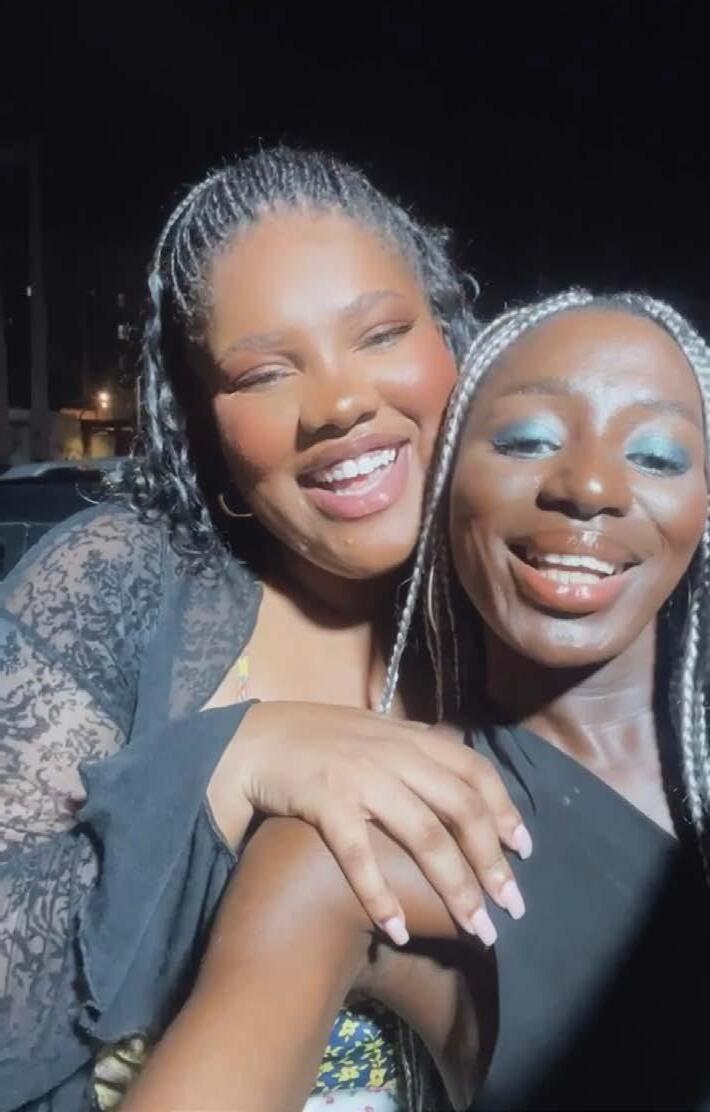

Ah, my HBS girls. We navigated the often treacherous waters of girlhood together. Remember the days of giggling over crushes, decoding the latest teen slang, and sporting questionable fashion choices? Through it all, we were each other’s cheerleaders and confidantes. Now, years later, I have the immense privilege of witnessing them blossom into phenomenal women and mothers. They’re juggling careers, fierce love for their families, and that same infectious sense of fun we had back in the day. What about Fiyin and I, who share a bond built on mutual respect and a shared commitment to living our best lives? With her, I feel seen and challenged, always encouraged to strive higher. Idara’s friendship, while at times taking us through difficult terrain, has been a lesson in growth, accountability, and forgiveness, and watching her build the life of her dreams gives me so much joy. Meme, she’s like a burst of radiant energy, a road trip with the windows down and a killer soundtrack–pure, uninhibited freedom. Soft and strong in equal measure, a beautiful paradox of a woman. Toma is the brilliant, tenderhearted little sister I never had. We protect each other, laugh until we cry, and share secrets only sisters can understand. Karina, with her quiet wisdom and open heart, is a sanctuary for those around her. Her capacity for holding space, for listening without judgment, seems boundless. She gives so effortlessly of herself, so generously, that it makes me ache with the knowledge that I could never truly repay her kindness. But there’s a fierce joy in trying. Even across oceans, Lola carries a quiet strength in her heart. I know that when the world feels
overwhelming, her understanding and support will be a lifeline. All these women, and so many more, illuminate different facets of my soul. They’ve taught me about laughter, loyalty, resilience...and the infinite forms that love can take. Together, they’re the authors of the greatest love story I’ll ever know.
The real test, the thing that sets platonic love apart, is the way it holds steady in the hard times. They say romantic love is finding someone to build a life with. But what about those who help you rebuild a life when it feels shattered? My friends have weathered storms with me: Breakups, depression, and grief. They meet me in the depths, not with platitudes, but with an unwavering belief that I’ll find my way back to the light.
It’s not that romantic love can’t be beautiful. But shouldn’t we elevate the life-affirming power of our female bonds? Those friends who run you a bath when heartbreak feels impossible to face, who coax you out of your shell on bad days, whose love isn’t contingent on a ring or a shared surname. We talk about finding our “person.” I’ve stopped looking for one. I’ve found an entire constellation.

These women have expanded my sense of what’s possible and made me a braver, kinder, freer version of myself. We navigate heartbreak, career triumphs, and the sheer absurdity of adulting together. Isn’t that the most romantic thing of all?
Maintaining a haircare regimen requires a lot of money. Try a DIY hair mask if you’re searching for a quick, simple, and inexpensive approach to care for your hair and encourage longer, healthier strands. We all experience problems with our hair, whether from breakage, dryness, flakes, frizz, or fading. Seasonal changes, indoor heat, outdoor factors, and hot hair tools are just a few of the things that might lead to these problems. Thankfully, you don’t need to go shopping or add another beauty item to your Amazon basket. Instead, you can go right to your kitchen and gather common ingredients to make a homemade hair mask using a few basic pantry basics to restore the health of your hair. This article will show three DIY masks you can whip up at home for healthier hair.
Use It To Treat
Dandruff and dry scalp benefit greatly from a castor oil hair mask. With its antibacterial qualities and abundant fatty acids to moisturise, castor oil is a useful remedy for dandruff and dry scalps.
Ingredients
One teaspoon of castor oil.
Directions
Fill a little bowl with cold-pressed castor oil. For approximately ten seconds, preheat in the microwave. It ought to be warm rather than hot. Apply the castor oil on your scalp and down your hair shaft with your fingertips. After 15 minutes of application, thoroughly rinse and then shampoo.
Use It To Treat
For thinning and breakage, try combining cinnamon with coconut oil. While coconut oil is high in fatty acids and aids in further healing, the spice acts to increase blood circulation and support hair growth and strength.
Ingredients
One teaspoon each of coconut oil and ground cinnamon.
Directions


Combine ingredients and blend until smooth. Apply the mask and massage it on your roots and part of your scalp. Take off the mask and rinse with warm water after 30 to 45 minutes.


Use It To Treat
You can treat dry, damaged hair with avocado and banana. This deep-conditioning mask replenishes the hair’s protein levels with nutrient-rich substances, giving it a lustrous, healthy shine.
Ingredients
Two teaspoons each of avocado and banana.
Directions
Mash the avocado and banana together with a fork until smooth. Make sure every part of the hair is completely saturated by applying the mixture from the roots to the ends. After letting it sit for fifteen minutes, rinse it out.
Starting cautiously is advised when using any DIY masks in your routine. DIY masks can often be used once a month or one to two times a week, depending on the particular issue. Once a month is a good starting point to observe how your hair responds; if your hair and scalp require more frequent masking and can handle it, you can always increase the frequency to weekly.
Not having as much space as you would want in your home doesn’t mean you can’t make the most out of what you have. Every corner of your space can be your canvas to bring your artistic nature to life. Sophistication isn’t limited by space, only your mind. With the right design, even the most compact living spaces can radiate elegance and enchantment; it all depends on how much beauty you can bring to reality. Luckily, this guide will explore a few tips and tricks for decorating any compact space you have.

It only makes sense to maximise how flexible your compact space can be, and with foldable chairs and collapsible tables that can be easily and neatly tucked away when not being used, you get to have as much space as possible. It’s common for people to walk into their rooms, observe the space around them, and feel some satisfaction and relaxation, so if that describes you, then foldable furniture is your go-to option.

Sliding doors, folding screens, or bookshelves can be used to form a demarcation between different areas of the rooms without sacrificing the beauty of both rooms. Make sure to select colours and styles that fit in with the rooms you are separating. Remember, you are enhancing the beauty of your place.

The best thing about these ideas is that you can use them even in bigger spaces. All you have to do is add a bit more of the razzle-dazzle to your taste, and then you have got yourself a living space with style. Remember, sophistication isn’t limited by space but by your mind alone.

In the aspect of colours for the walls, trims, and ceilings, the most recommended would be the colour white; it’s a colour known to make rooms feel more spacious than they actually are and adds serenity to the room’s atmosphere. For furniture, a neutral colour would be an excellent theme. A couple of ideas, for instance, would be a light grey L-shaped sofa with an armchair or warm beige couches of various sizes. The idea is to choose a neutral colour you find appealing and go with it.
Keep in mind that your space is your personal gallery, and it’s only right to get your favourite art pieces or family portraits displayed in your space. Just make sure not to overdo things. Too much artwork around takes up more space than it should.
In small decor, lighting is crucial in terms of limitations and decorations to add more finesse to your atmosphere. For these reasons, wall sconces and pendant lights are highly recommended to add style to your place.




The astrological realm is an expensive universe of 12 different zodiac signs, and in it, the sign of Pisces stands out as a symbol of intuition, empathy, and imagination. Represented by the symbol of two fish swimming in opposite directions, Pisces is the twelfth and final sign of the astrological wheel, marking the end of the astrological year, and a new cycle of growth and renewal commences. With its ruling planet Neptune casting a mystical aura over its domain, Pisces invites us to dive deep into the depths of our imagination, exploring the mysteries of the watery realm within.
Those born under the Pisces sign, spanning from February 19th to March 20th, are commonly portrayed as sensitive individuals endowed with a natural talent for understanding the feelings of others. Like the two fish gracefully gliding in opposing paths, Pisceans exhibit a double personality, transitioning between playful idealism and profound, intense emotional insight. Their natural intuition enables them to cross the currents of the unseen universes, reaching deeply into their imagination and uncovering realms beyond the earthly one.
Under the dominion of Neptune, Pisces finds extreme connections with emotions, creativity, and spirituality. Individuals born under this sign frequently exhibit heightened instincts and empathy, finely adjusted to the delicate energies they feel around them. Endowed with compassionate spirits and infinite imagination, Pisceans mainly possess an artistic personality and utilise various mediums to convey their emotions.
As natural dreamers and visionaries, Pisceans are captivated by the mystical world and naturally seek refuge in the realm of dreams and creativity. This natural talent of being dreamers contributes to the limitless imagination they possess as well as a deeper link to their souls and grants Pisceans a unique perspective on existence. This enables them to differentiate between the surface and concealed truths.
With such natural gifts, it’s safe to say that Pisceans possess so much connection to a whole new universe beyond our physical eyes, opening their minds to new views, new ideas, and more creativity in their minds.

ELEMENT: WATER.
RULER: NEPTUNE.
SYMBOL: FISH.
GREATEST COMPATIBILITY: TAURUS, CANCER, AND SCORPIO
FLOWER: WATER LILIES.
BIRTHSTONE: AQUAMARINE.
DATE: FEBRUARY 19TH-MARCH 20TH.
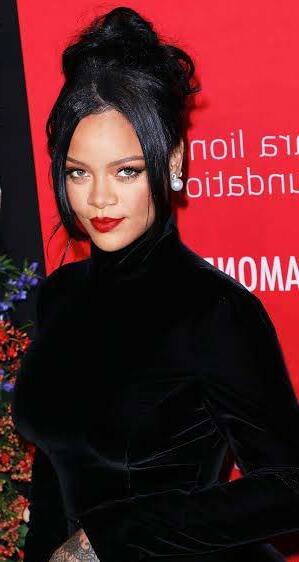

IthinkI’ve just seen a film that belongs in the ‘Best Sequel of All Time’ discussion along with The Empire Strikes Back, Terminator 2: Judgement Day, and The Dark Knight. Seriously.
Every once in a while, there comes a film that I classify as ‘perfect’. Be it from the cinematography (Greg Fraser is very quickly becoming a big enough draw to have his own section on the film’s poster. His last five films in a row are: Dune 2, The Creator, The Batman, Dune 1 and Rogue One: A Star Wars Story. Unreal run. ), to the soundtrack and sound design (Hans Zimmer outdid himself again somehow), not to even mention the plot, which is a cunning, sinuous piece of storytelling. I really can’t lavish enough praise here. This film about space worms and interstellar politics will make a billion dollars. Easily too.
Dune: Part Two picks up literally where Dune: Part One ends and takes you on a wild ride. Everything you saw in Part One has been cranked up to 11. Bursting with colour from the seams, every scene here could be a wallpaper. The scale of the ships and the size of the worms are even more outlandish; the costumes are ever more preposterous, and it’s clear no expense was spared in bringing director Denis Vilnueve’s vision of Frank Herbert’s books to life. I’m trying to avoid spoilers here, but I can’t tell you how many times I sat up in my seat in awe of what I was seeing on screen. My absolute favourite sequence here is a scene shot in this gorgeous monochrome, unlike any other I’ve ever seen (Greg Fraser!). It gives a unique feel to the Harkonnens that inhabit this planet, differentiating their level of absolute evil from the more nuanced shades of grey of all other characters in this film. I can’t get enough of it.
The plot of the movie revolves around Paul Atreides (an even more impressive Timotheé Chalamet), who is still reeling from the decimation of his entire family in Part One and his quest for revenge. This quest leads him into the desert of Arrakis and leads to his eventual assimilation and leadership of the Fremen. This section of the film makes up the bulk of the first hour, and seeing Paul and his mother, Jessica (Rebecca Ferguson in all her glory), go from rank outsiders to the political and religious leaders of the Fremen people is just a delight. This section is also where we get to see Javier Bardem’s Stilgar, the best character in the film by far. His descension from steely leader to devout believer in the “prophecy” is wonderfully played by the actor who was clearly having the time of his life. Chani (Zendaya), previously only seen in Paul’s visions in Part One, is an integral character here. Her relationship with Paul grows so organically across the 2-Hour 46 Minute runtime that the way that strand of the plot is tied up at the end is all the more gut-wrenching.
Paul’s quest for revenge (and Jessica’s prodding) leads him to do something that completely changes the course of the character. From that moment on, the film has a new, machiavellian, almost sinister energy. From this point, Paul is a less charismatic leader than he is a blue-eyed warlord. Timotheé Chalamet deserves much more credit for this part of the film because he may not be the most physically imposing, but his intensity smoulders through the screen, making this version of Paul completely believable.
This film asks a lot of questions. There are inquiries on determinism vs free will, religion, associated fanaticism, the dangers of messianic figures and the manipulation of religion for political gain. It is a dense film but is paced excellently, allowing for all levels of analysis. It’s also pretty damn fun. This one needs to be seen in theaters. Let the rumble of the cinema speakers vibrate through your body as you feast your eyes on the spectacle on screen. As the film’s credits were rolling, I just sat in my seat. Dune:
Part One was an out-of-body experience for me. I’d never experienced anything like that before. I didn’t go into Dune:
Part Two expecting that to be topped. Somehow, it has been.
Long Live The Fighters
Movie of the Year.

Scan this with your camera or click to access the playlist (Youtube Music)
Shōgun warrants all the Game of Thrones comparisons being tossed around online. FX’s new adaptation of James Clavell’s 1975 swords-andsamurais novel, about feuding Japanese warlords and the British sailor who crashes the party, is brimming with the intrigue, sex, and carnage that made HBO’s long-running epic a sensation.
But co-creators Justin Marks and Rachel Kondo are reaching for something loftier. Their Shōgun is pitched somewhere between an Akira Kurosawa epic – with its elegant recreation of feudal Japan – and Martin Scorsese’s Silence. The latter is set during the late-17th century period of Catholic persecution in Japan, a reaction to the colonial tensions and decisive battles depicted in Shōgun.
And the best thing about the new series is that it shares with Scorsese’s latecareer masterpiece a dogged pursuit for meaning and grace while lives are cruelly sacrificed for some higher calling.
I’m not saying Shōgun deserves to be mentioned in the same breath as Kurosawa and Scorsese. But it’s exciting to see ambitious and addictive streaming-era content pursue goalposts such as these, and largely succeed.
The new limited series adapts Clavell’s intricate novel, which is loosely based on sailor William Adams, the first Englishman to end up on Japan’s shores. Adams rose to become a samurai and adviser, whispering trade recommendations into shōgun Tokugawa Ieyasu’s ear (a shōgun is a military ruler).
In the series, the Englishman is John Blackthorne (Cosmo Jarvis), a rascally voyager aiming to disrupt Portugal’s stranglehold on trade (read: colonialism) in the region. His starved crew shores up on “the Japans” in 1600, just as a power play unfolds among the land’s regents. John Wick: Chapter 4′s Hiroyuki Sanada stars as Lord Yoshii Toranaga, the stoic and strategic would-be despot who holds the audience’s allegiance. He makes Blackthorne a pawn in a slippery game of “my enemy’s enemy,” which plays off the myriad tensions between tribe, race, religion and a rogue’s gallery of players with varying degrees of discipline and loyalty. Glance at your phone and risk getting lost in the labyrinthine plot.
The biggest departure here is the shifting focus toward the Japanese characters. Where the earlier version didn’t venture far from Chamberlain’s orbit and didn’t even bother subtitling the Japanese dialogue, the new take has Jarvis’s

Scan this with your camera or click to access the playlist (Spotify)

Blackthorne happily riding shotgun in Toranaga’s story. For what it’s worth, Jarvis – who we’ve already seen play an out-of-his-depth pawn in a power grab opposite Florence Pugh in Lady MacBeth – should win heartthrob status for all the chivalrous pouting he gives here.
Blackthorne’s affections are directed at Mariko, the married woman assigned by Toranaga to be his translator, played with piercing precision by Fast & Furious 9′s Anna Sawai. She becomes the show’s gravitational centre, and not just because she’s often positioned between the two male leads.
Shōgun’s greatest tensions lie in Mariko’s constant negotiation between a fierce sense of duty and guarded emotions. We see that play out in the forbidden romance between Mariko and Blackthorne, all those discreet glances and words accented with tenderness building toward a thrilling three-way (sort of)



involving a courtesan. In a weirdly beautiful sequence, the courtesan Kiku (Yuka Kouri in a lovely performance) gives over her body to express the passion between Mariko and Blackthorne, as if she’s a whole other kind of translator.
Mariko is also our primary guide to the culture in feudal Japan and often finds herself negotiating with its most troubling values and customs. She gently fights to control her own fate while resigning herself to the patriarchal structures that see women as the property of their husbands. And she’s often left searching for the words to make seppuku – a ritualised suicide –or other forms of laying down a life for honour and duty make sense. There’s a lot of glorified death in Shōgun that weighs heavily on the soul while confounding rationale. The writers – half of whom are women of Japanese American descent –seem to be working out their frustrations while trying to both honour the heritage and hold it to account. That’s what keeps Shōgun fascinating even as the double-crosses and assassinations push past the point of exhaustion.
The show keeps bumping up against these impenetrable customs, walking a fine line between romanticising and demonising. There’s a struggle in Shōgun to make sense of it all and poetry in its failure to do so.





